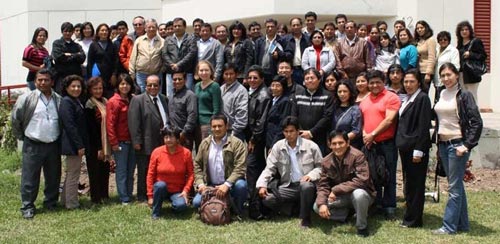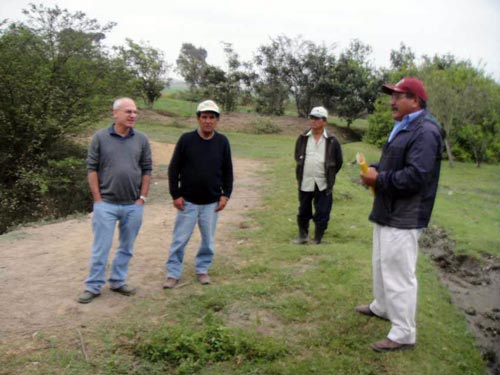A course on biotechnology applications to plant genetic breeding was held during 26-30 September 2011, at La Molina Agricultural University, Lima, Peru. Over 100 scientists from Peru’s National Institute of Agricultural Innovation and Peruvian universities attended the course, which focused on modern concepts and procedures of biotechnology as applied to plant breeding.

The instructors covered many topics. Myriam Cristina Duque, International Center for Tropical Agriculture (CIAT), gave a presentation on biometrics applied to plant breeding, with an emphasis on experimental designs for non-balanced trials. Gary Atlin, CIMMYT, then focused in on heritability, mixed models theory and its application to plant breeding, as well as current uses of sequencing and genomics. Association mapping and analysis of plant genomes using molecular markers and QTL mapping was the subject of a presentation by Marilyn Warburton, USDA, and Luis Augusto Becerra, CIAT, also discussed molecular markers, as well as demonstrating the use of MapMaker and conducting a session on plant gene-based mapping. Luis Nopo, Arkansas State University, spoke about transgenic plant transformation and Raúl Blas, La Molina Agricultural University, conducted a practical session on extracting DNA from plants.
Unanimous positive feedback was received from the participants, who suggested that similar courses be held in other locations in order to better disseminate knowledge on current technologies. Resources for the course came from Peru, whose partnership with CIMMYT dates back 10 years, with the objective of developing profitable and environmentally-friendly maize technologies.
CIMMYT looks to further partnerships with Peru

Following the course on biotechnology for plant genetic breeding in Peru, Gary Atlin (Associate Director, CIMMYT Global Maize Program) and Luis Narro (Coordinator, CIMMYT-Columbia) met with Juan Rheineck Piccardo, Peru’s Vice-Minister of Agriculture on 27 September 2011, to discuss possible further partnerships between CIMMYT and the Peruvian government.
It is hoped that further collaborations would increase maize production in Peru, which currently produces just 40% of its national grain demand. Piccardo expressed interest in the proposals, suggesting that a project should be implemented at the National Institute of Agricultural Innovation (INIA) to select water-efficient maize genotypes. Atlin and Narro then visited the INIA site at Paiján, in the north coastal zone of Peru, to assess it’s characteristics. The area has no rainfall, allowing researchers to control the amount of water the plants receive during development, and the water table is more than 8 meters below ground-level, therefore avoiding interference between underground water and irrigation systems. Dialogues will continue once the selection trial has been established.

